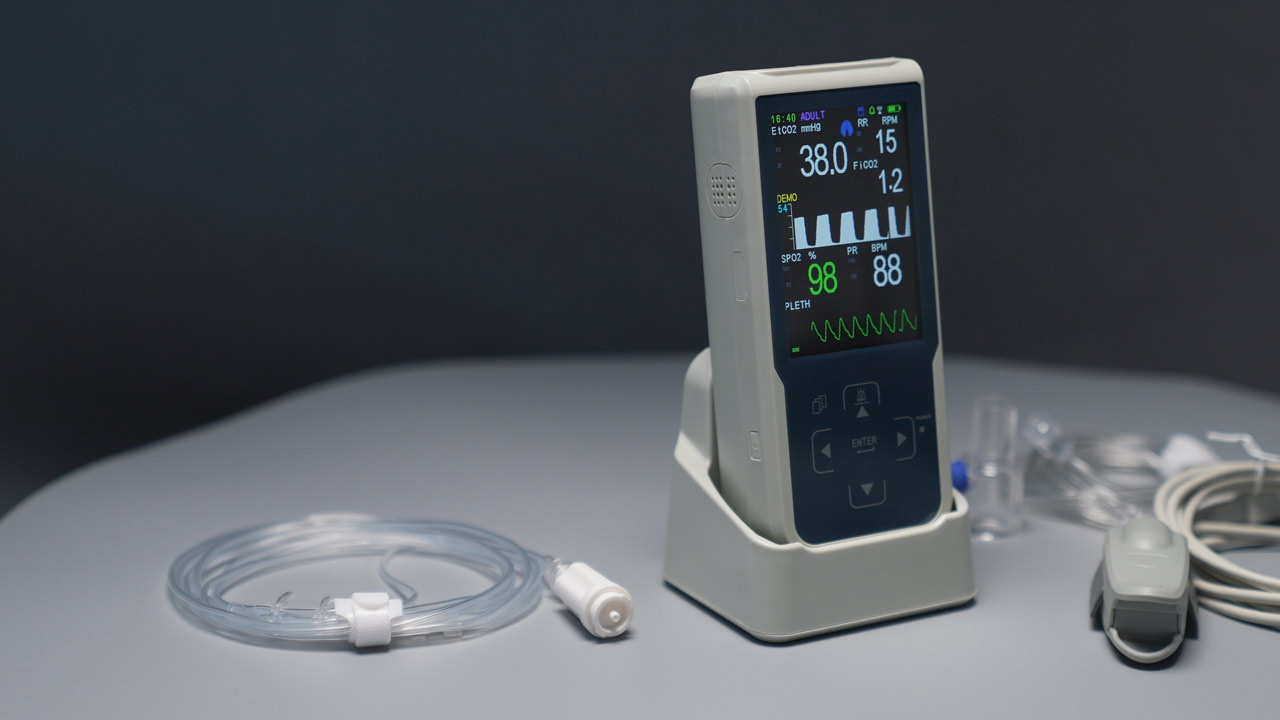Malignant hyperthermia (MH), also known as malignant hyperthermia syndrome, is a rare but dangerous genetic disorder often occurring during the use of anesthesia drugs. It is an acute, systemic metabolic disorder characterized by symptoms such as high body temperature, metabolic acidosis, muscle rigidity, and cardiac arrhythmias. Without timely intervention, it can lead to severe complications and even endanger the patient's life.
In the setting of anesthesia surgery or in the anesthesia recovery room, carbon dioxide monitoring at the end of expiration (end-tidal CO2 monitoring) can play a crucial role in cases of malignant hyperthermia:
Early detection of abnormalities: Patients with malignant hyperthermia often exhibit metabolic acidosis and respiratory alkalosis, leading to rapid, deep breathing. End-tidal CO2 monitoring can promptly detect changes in respiratory rate and depth, aiding in the early identification of abnormal breathing patterns and alerting healthcare providers to potential serious complications.
Guidance for treatment: During a malignant hyperthermia crisis, the patient's metabolic rate significantly increases, resulting in elevated body temperature and increased carbon dioxide production. Monitoring end-tidal CO2 levels can help healthcare providers assess metabolic status and guide treatment decisions. Timely adjustments to ventilation support, temperature control, and selection of appropriate pharmacotherapy are critical in treating malignant hyperthermia.
Monitoring treatment efficacy: Throughout the treatment of malignant hyperthermia, monitoring end-tidal CO2 levels can help evaluate treatment efficacy. Effective treatment measures can reduce carbon dioxide levels, improve respiratory function and metabolic status, and alleviate severe metabolic acidosis and other complications.
In summary, end-tidal CO2 monitoring plays a significant clinical role in cases of malignant hyperthermia during anesthesia surgery or in the anesthesia recovery room. It can help healthcare providers promptly identify abnormal breathing patterns, guide treatment decisions, and monitor treatment efficacy, thereby maximizing patient safety and health.
